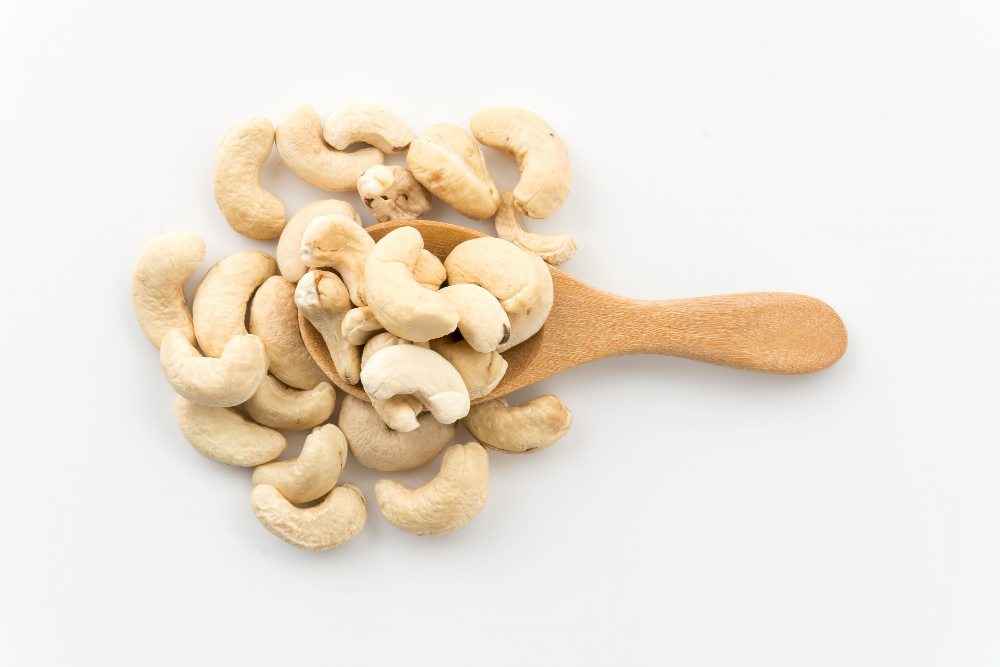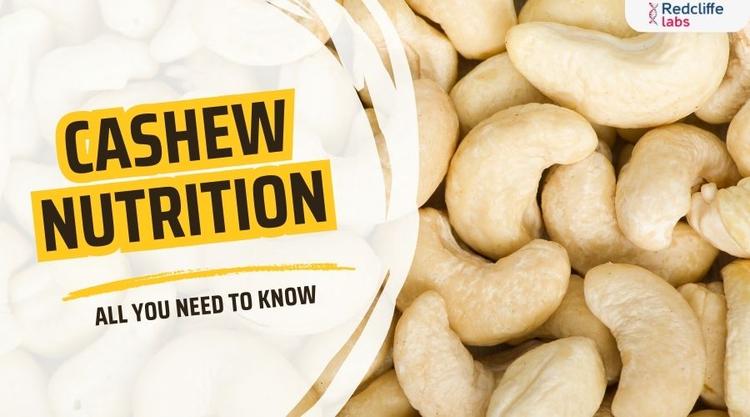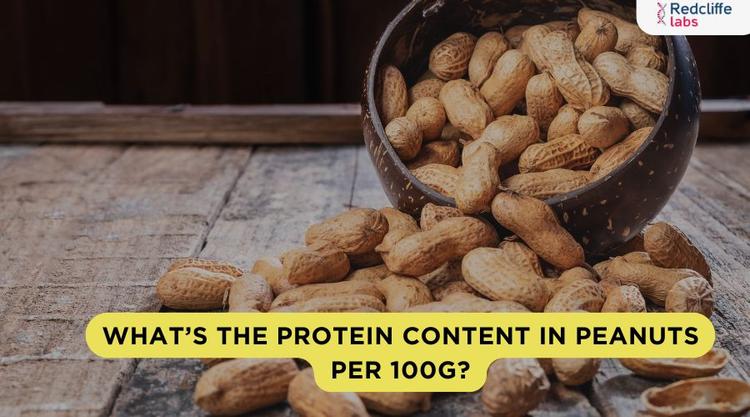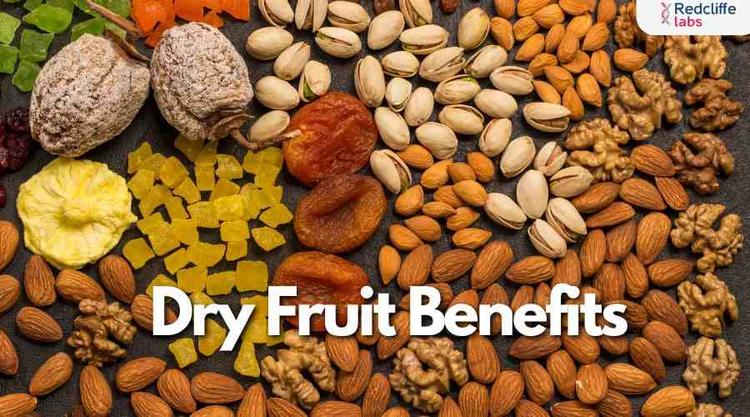Calories in Cashew (Kaju), Nutrition Profile, Benefits, and More!

Medically Reviewed By
Prof. Ashok Rattan
Written By Sheena Mehta
on Sep 7, 2024
Last Edit Made By Sheena Mehta
on Jul 19, 2025

Introduction
How many times have you pondered about delicately sweet yet crunchy and tasty cashews? With a kidney bean or boxing glove-like appearance, a handful of cashew nuts contain all the essential nutrients that may help prevent deficiency diseases.
Some interesting facts about cashews that you may like to know
- Cashews are native to the northeastern Brazilian coast, but they are now cultivated in many African countries, Vietnam, and India.
- Cashews, or Anacardium occidentale, are sourced from a cashew tree.
- Vietnam produces the largest cashews in the world and is followed by India, the second-largest producer of cashew nuts.
- They are energy—and nutrient-dense snacks. However, moderation remains the key to obtaining their health benefits.
- Cashew is called Kaju in India.
- Cashews are generally considered a delicacy in India. They are commonly used in desserts and sweets, recipes, and salads, to name a few. Have you ever tried cashew butter?
Do you know?
The demand for cashew milk is increasing among vegans and lactose-intolerant individuals because it is a healthier, more sustainable, and more ethical alternative.
Here is a nutrition profile of cashews:
The important nutrients in cashews are:
- Copper
- Calcium
- Zinc
- Phosphorus
- Potassium.
Let’s discover the nutritional value of 30 grams of cashew nuts (plain).
| Calories | 175 kcal |
| Carbs | 7.6 g |
| Protein | 5.6 g |
| Fat | 13.6 g |
| Calcium | 10.2 mg |
| Phosphorus | 150mg |
| Iron | 1.79 mg |
| Fiber | 1.2 g |
| Omega 3 | 16.51 mg |
| Sodium | 2.7 mg |
| Potassium | 190.5 mg |
| Zinc | 1.6 mg |
| Folate | 7.56mcg |
| Magnesium | 92.1 mg |
| Copper | 0.677 mg |
| Niacin | 0.31 mg |
| Riboflavin | 0.01 mg |
| Thiamine | 0.18 mg |
| Vitamin E | 0.32 mg |
Do you know?
How many total monounsaturated fatty acids (TMUFA) are present in cashews?
8372.1 mg
How many polyunsaturated fatty acids (TPUFA) are present in cashews?
2244.6 mg
How many total saturated fatty acids are available?
2344.8 mg
Let’s look at some amazing health benefits of cashews:
All nuts, including cashews, offer numerous health benefits. It is so because cashews contain fiber, are low in sugar, and are an excellent source of heart-healthy fats and plant protein. Consuming cashews as a part of a nutritious and balanced diet can do wonders for your brain, bones, and immune system and is important for energy production.
- It helps lose weight: The protein and fiber content in cashews can help cut down unnecessary hunger and increase the feeling of fullness. Besides, the anti-inflammatory properties of omega-3 fatty acids in cashews may boost metabolism. So, consuming cashews in controlled portion sizes can aid in weight loss.
- Cashews can improve lipid profile: Although cashews have zero cholesterol, their high magnesium content can lower bad cholesterol (LDL) and prevent heart disease. Moreover, cashew nuts' monounsaturated and polyunsaturated fatty acids lead to an improved lipid profile.
- They are good for the heart: Cashews' fiber, unsaturated fatty acids, and minerals make them a heart-healthy food.
- Cashews reduce the risk of gallstones: They are a rich source of fiber, which helps reduce cholesterol absorption in the intestines and thus regulates cholesterol levels.
- Helps people with diabetes: Cashews' anti-diabetic properties make them a better option than other nuts for people with diabetes. They are a valuable dietary component for sugar patients, keeping blood sugar levels in control.
- Helps prevent copper deficiency: A handful of cashews can successfully treat copper deficiency. Cashews contain copper and are known to reduce hair thinning.
Peanuts vs. cashew nuts
Here are six similarities between peanuts and cashew nuts:
- Protein: It is crucial for muscle repair and growth. Both cashews and peanuts are good sources of protein.
- Healthy Fats: Cashews and peanuts contain polyunsaturated and monounsaturated fats, making them beneficial for maintaining good heart health.
- Vitamins and Minerals: Both contain essential vitamins and minerals, including magnesium, potassium, and vitamin E, which contribute to overall health.
- Antioxidant Properties: Both these nuts contain antioxidant properties. The resveratrol in peanuts and the anacardic in cashews safeguard the body against oxidative stress and inflammation.
- Economic Relevance: Cashews and peanuts are important crops. The former provides a source of income to more than 3 lakh families, while the latter is grown in over 100 countries and helps farm families eat well.
- Roasting and Flavoring Properties: Cashews and peanuts can be roasted and seasoned.
Here are six differences between peanuts and cashew nuts:
- Botanical Classification: Cashew nuts are sourced from the cashew tree (Anacardium occidentale), and peanuts are legumes. They are linked with peas, beans, and lentils.
- Nutritional Profile: Peanuts have a higher protein content. A 28-gram serving of peanuts can offer 7 grams of protein, while cashews can offer 5 grams.
- Calories: Compared to cashews, peanuts are slightly higher in calories. About 28 grams of peanuts can offer 160–170 calories, whereas the former can serve about 160 calories.
- Allergen Potential: Cashews can cause more severe allergic reactions.
- Growth and harvesting: Cashew nuts are grown on trees in warm climates. Peanuts grow underground and are harvested from the soil.
- Cashews contain vitamins and minerals such as vitamin K, phosphorus, and magnesium. Peanuts are a good source of folate, niacin, and vitamin E.
Also read: https://redcliffelabs.com/myhealth/allergy/food-allergy-symptoms-diagnosis-treatment/
Culinary Uses of Cashew Nuts
After learning about the ample benefits of cashews, the similarities, and the differences between peanuts and cashew nuts, it’s time to discover some excellent culinary uses of cashews. They are a star ingredient in many Indian, Persian, Afghani, and Pakistani dishes. But before that, you must know:
What is the recommended intake of Cashews per day?
Depending on age, weight, and underlying medical condition, cashews should be consumed. It is recommended to eat about 8-10 cashews per day as part of a balanced diet to reap all of its benefits.
Below are some cashew serving tips:
- You can enjoy salted or sweetened cashews as snacks.
- You can garnish cashews and incorporate them into sweets and desserts.
- If you have ever had Hyderabadi Biryani rice pulao, you know that cashews, along with other dry fruits and almonds, are majorly used in savory rice dishes.
List of foods that use cashews:
- Cashew chicken or Sichuan pork
- Stir curries such as Kaju-shahi-paneer
- Salads
- Cashew cakes
- Cashew ice creams
- You can use cashews in tikkas and kebabs.
- Relish a glass of cashew milk.
Conclusion
Cashews are versatile ingredients that can make any normal dish a star. You can eat them plain (unsalted) or roast them and season them with sea salt and black pepper, creating a delightful crunch.



